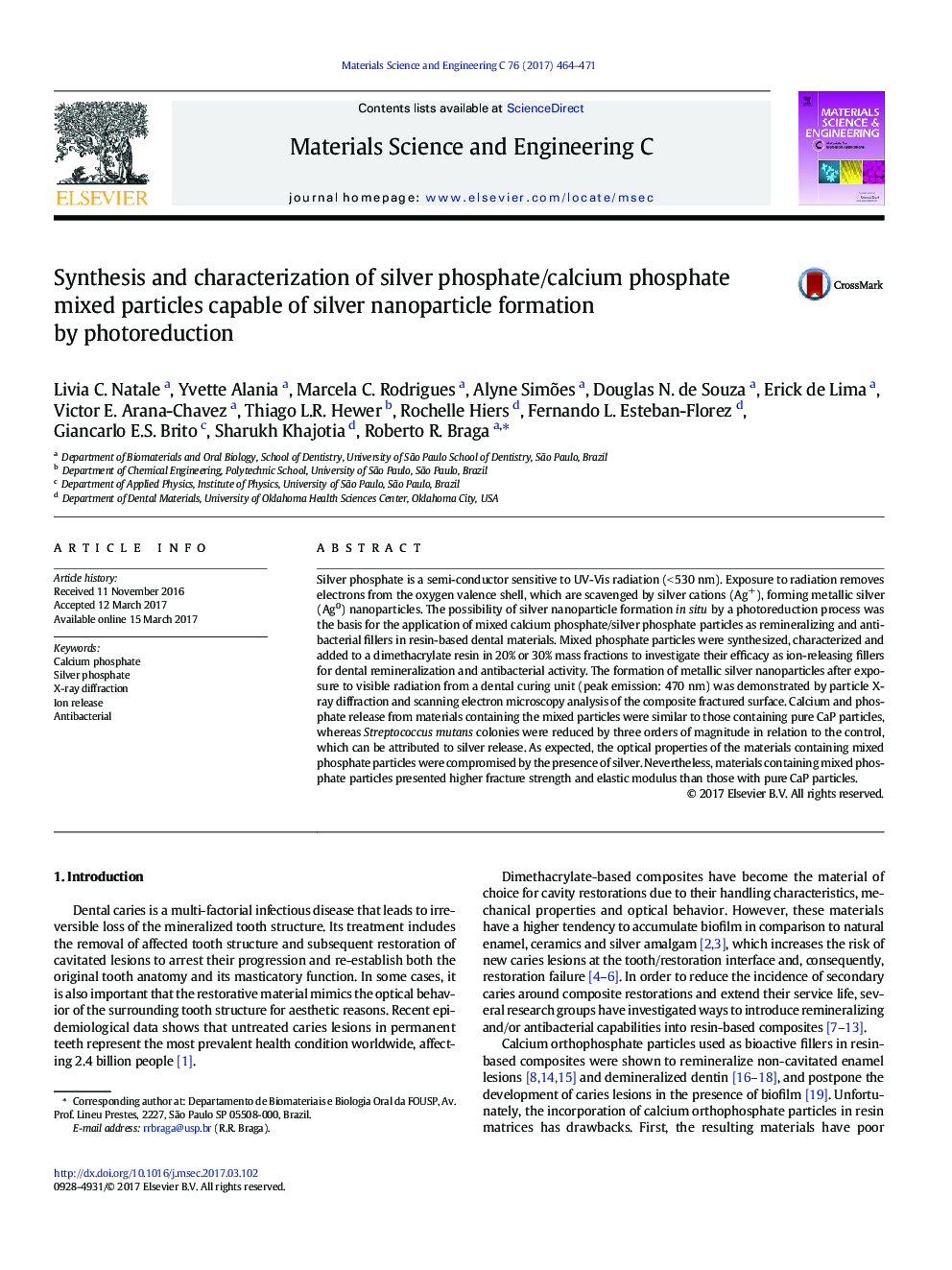| Article ID | Journal | Published Year | Pages | File Type |
|---|---|---|---|---|
| 5435139 | Materials Science and Engineering: C | 2017 | 8 Pages |
Silver phosphate is a semi-conductor sensitive to UV-Vis radiation (<Â 530Â nm). Exposure to radiation removes electrons from the oxygen valence shell, which are scavenged by silver cations (Ag+), forming metallic silver (Ag0) nanoparticles. The possibility of silver nanoparticle formation in situ by a photoreduction process was the basis for the application of mixed calcium phosphate/silver phosphate particles as remineralizing and antibacterial fillers in resin-based dental materials. Mixed phosphate particles were synthesized, characterized and added to a dimethacrylate resin in 20% or 30% mass fractions to investigate their efficacy as ion-releasing fillers for dental remineralization and antibacterial activity. The formation of metallic silver nanoparticles after exposure to visible radiation from a dental curing unit (peak emission: 470Â nm) was demonstrated by particle X-ray diffraction and scanning electron microscopy analysis of the composite fractured surface. Calcium and phosphate release from materials containing the mixed particles were similar to those containing pure CaP particles, whereas Streptococcus mutans colonies were reduced by three orders of magnitude in relation to the control, which can be attributed to silver release. As expected, the optical properties of the materials containing mixed phosphate particles were compromised by the presence of silver. Nevertheless, materials containing mixed phosphate particles presented higher fracture strength and elastic modulus than those with pure CaP particles.
Graphical abstractDownload high-res image (150KB)Download full-size image
